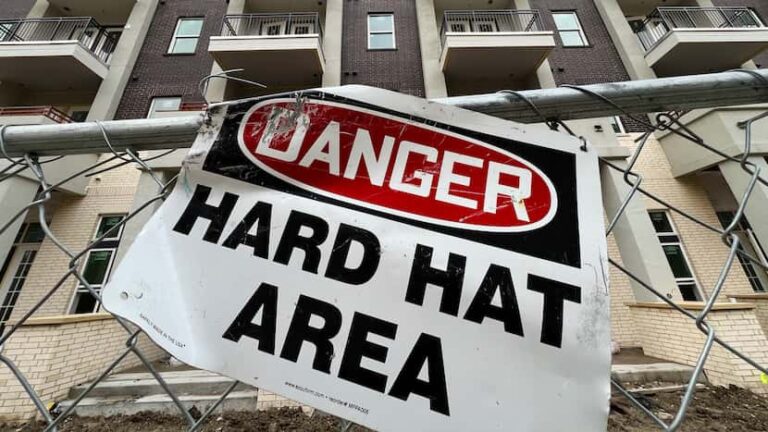Over the past decade, the creaking of cranes and the screams of hardhat-clad workers have become more prevalent in Dallas-Fort Worth than anywhere in the country.
They are building apartments.
And even if people flock to the region in droves, there are more than enough units to welcome them.
There’s currently an oversupply of apartments in the D-FW area, with some units remaining vacant and rents down slightly from last year.
Supplies are expected to peak sometime next year, but experts say the oversupply is a short-term problem.
The machine is slowing down. Fewer apartments are being built because of high costs, and as the area grows, the apartments will fill up. Investors, developers and other potential profit-makers are betting on the long-term prospects.
“Everyone is waiting, hoping that time will tell,” said Sriram Villupuram, a professor of finance and real estate at the University of Texas at Arlington.

The growth of the Dallas metropolitan area over the past decade has been immense.
More than 181,000 apartments have been built since 2014, a staggering 35.5 percent increase in the massive market, according to data from RealPage, a Richardson-based property management software company.
The buildings are not evenly distributed throughout the area.
Frisco, the Rockwall/Rowlett/Wylie area, the Allen/McKinney area and southeast Kaufman County markets have more than doubled their apartment inventory over the past decade.
However, North Irving, Mesquite, Far East Dallas and Far North Dallas saw few new listings added during the same period, the data showed.
While prices have fallen since last year, rents remain significantly higher than they were before the COVID-19 pandemic.
As of April 30, the average rent for an apartment in the D-FW area was $1,468, down 4% from a year ago, according to a report by MRI ApartmentData, which tracks apartment trends in 12 large Sunbelt markets.
The company reported that the average rent in September 2018 was $1,116.
D-FW’s April 2024 occupancy rate is 89%, with over 38,000 units recently opened.
About 35,000 more apartments are under construction, with developers proposing more than 80,000 additional units, according to MRI data.
Dallas is not the only city where MRI is seeing a trend of oversupply, but other major Sun Belt cities, including Atlanta, Orlando, Houston, Austin, Nashville and San Antonio.
“The timing is just bad at the moment,” said Bruce McClenny, industry director at MRI Apartment Data. “The current apartment glut is just another chapter in the extreme shift in supply and demand that began during the COVID pandemic.”
Between March and June 2020, the D-FW market saw an influx of about 26,000 units, but few leases were signed. But in 2021, as the nation’s economy reopened and remote work became more common, demand for apartments soared. Rents increased about 19% over the course of the year, according to MRI data.
In response to this boom, real estate developers are building more apartment buildings across the country than at any time in the last half-century. Projects take roughly two years to go from concept to completion, and the apartments will begin to open in 2023 and 2024, McClenny said.
Job growth in the D-FW area remains impressive, but not at the same levels as in 2021. Slowing demand and a surge in supply have led to lower annual rents, he said.
Mr McClenny said the 4 per cent drop in rents was “pretty dramatic”.
If occupancy rates gradually increase, apartment complexes may offer additional perks, such as two months free rent, he said.
“It’s starting to have an impact in some of these markets, particularly in the upscale and urban markets,” he said. “It could happen.”
But Villupuram said he’s surprised rents aren’t falling at this occupancy rate, which may be because construction costs are high and lenders aren’t beating down doors to collect debts.
“Ten percent is OK in rural markets, but 10 percent is unheard of in the 10 years I’ve lived in Dallas-Fort Worth,” he said.
As more projects are completed, the oversupply problem will continue, and while rents may come down a bit more, construction will likely slow.
Rising interest rates on construction loans and construction delays are contributing to the slowdown, along with some oversupply.
D-FW’s annual supply is expected to peak at about 38,000 homes at the end of the year. Construction delays could delay that peak by a quarter or two. RealPage chief economist Carl Whitaker expects the peak to occur between the end of 2024 and the summer of 2025.
New supply will fall as developers build fewer units, but construction is already slowing: Developers started construction on 24,000 units in the year to February 2024, less than half the rate from the previous year, according to RealPage data.
McClenny said he expects that situation to reverse and demand to start outstripping supply in late 2025 or early 2026.
“It’s too expensive. The financial situation has changed. The materials, the costs, everything has changed,” he said. “The whole cost of operating the property has changed so much that it’s almost impossible to develop.”
But he said Dallas can handle the oversupply as long as the waiting game continues.
“Dallas is well-positioned to manage this,” he said. “Dallas is a job creation engine like no other. It’s just bad timing.”

